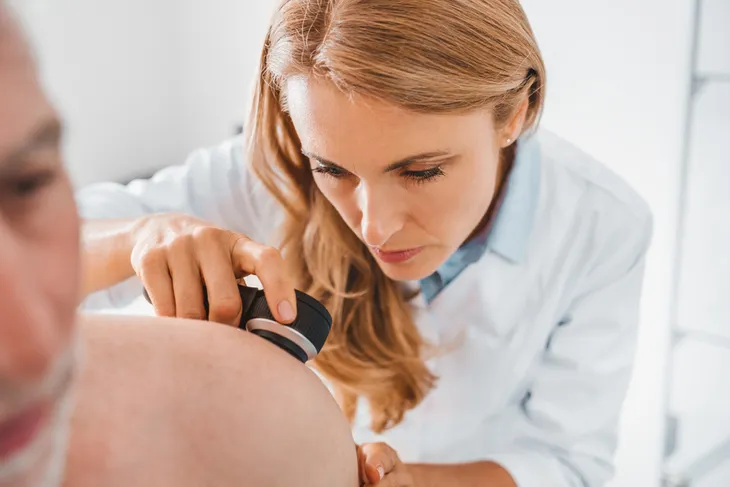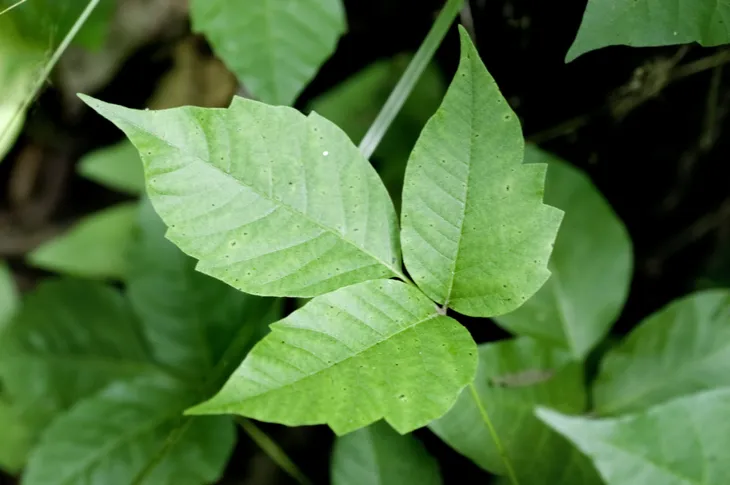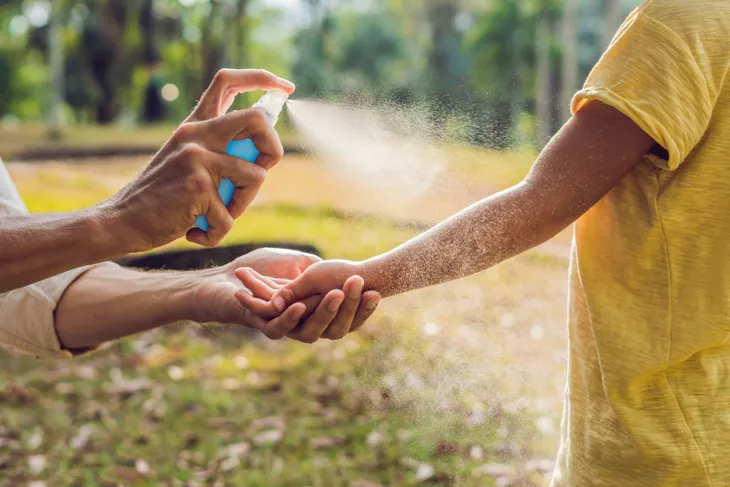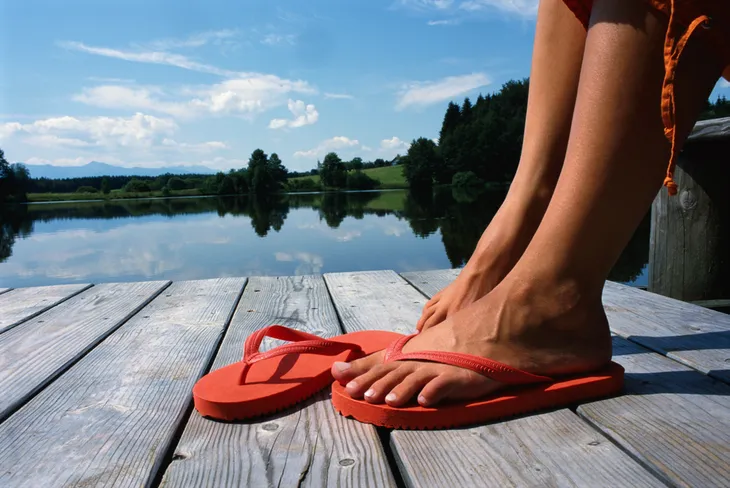- There are tons of fun things to see and do in the summer but the hot and sweaty conditions of the season can cause skin problems.
- While you certainly need to protect your skin from the sun, there are other offenders you need to be mindful of like bug bites, heat rash, swimmer’s itch, and more!
- Protect your skin this summer by getting informed and learning about the 12 common summer skin problems.
Ah, summer. Nothing quite beats those warm, sunny days lounging in the sun. Or perhaps you prefer heading outdoors to enjoy a long hike in the woods or a swim in the lake. While summer offers tons of fun activities, an itchy rash or painful sunburn can quickly ruin your summer fun. But these aren’t the only skin problems you need to be wary of.
From poisonous plants to bug bites and even excessive sweating, there are lots of things waiting to wreak havoc on your skin. But one way you can protect your skin this summer is by getting informed. Here are 12 common summer skin problems to be mindful of plus how to protect yourself from them.
Sunburn
While a sunburn may be the most obvious skin problem on this list, it’s still worth mentioning. After all, many people spend a lot of time in the sun and without proper protection, your skin is susceptible to a sunburn.
Not only are sunburns painful, but they leave behind lasting damage, says the Skin Cancer Foundation. Sunburns can accelerate skin aging and increase your risk for skin cancer.
Protect your skin from a sunburn by wearing broad-spectrum sunscreen with an SPF of 15 or higher daily. When spending a lot of time outdoors, use a water-resistant, broad-spectrum sunscreen with an SPF of 30 or more, and be sure to reapply every 2-hours, or after sweating or swimming. You can also protect your skin from the sun by wearing wide-brimmed hats, sunglasses, and clothing, as well as playing in the shade.
Sun Allergy
Not only can too much sun exposure cause a sunburn, but in some people, it can cause an allergic reaction. The Mayo Clinic says the most common form of a sun allergy is known as polymorphic light eruption, also called sun poisoning.
Signs of a sun allergy can vary, however, the source says to be on the lookout for redness, itching, pain, tiny bumps, scaling, blisters, or hives. Symptoms typically develop after a few minutes or hours of sun exposure.
Mild cases may not need treatment, however, more severe cases may require creams or medication. If you think you may have a sun allergy, talk to your doctor for a proper diagnosis and treatment plan. In the meantime, be sure to protect your skin from the sun.
Melasma
If you’re prone to melasma, you’ll want to protect your skin from the sun. Melasma causes patches and spots that are darker than your skin tone and they most commonly develop on the face.
While there are a variety of causes from genetics to hormones, the sun can also make the appearance of melasma more prominent. This is because “ultraviolet and infrared radiation from the sun is key in making melasma worse,” explains the Cleveland Clinic. You can protect your skin during the summer by wearing sunscreen.
 Shutterstock/New Africa
Shutterstock/New AfricaSkin Cancer
Since we already know sunburns can increase your chances of skin cancer, this is yet another skin problem you need to be mindful of in the summer. If you plan on spending a lot of time in the sun this summer, it’s so important to protect your skin from the sun’s harmful ultraviolet rays.
Be sure to protect your skin or stay out of the sun during the strongest hours of the day. Dermatology Associates says that’s between 10-am and 4-pm.
It’s also important to do self-exams and check your skin for signs of skin cancer at least once a month. The American Cancer Society says to look for a new or changing growth, spot, or bump on the skin. Also, be on the lookout for scaly red patches; sores that bleed; moles that have an odd shape, irregular borders, or areas of different colors; as well as moles that change in size, shape, or color. Contact your doctor if you notice any of these signs.
Heat Rash/Prickly Heat
Summer can be hot! And with that often comes a lot of perspiration. Harvard Health says materials like clothing or the seat you’re sitting on can block some of the openings in your skin that allow sweat to escape. Over time, this can cause “the ducts that carry sweat to the skin to become inflamed, creating a rash of small itchy bumps wherever the material touches you,” explains the source.
This rash is known as prickly heat or heat rash. The source says the best way to combat prickly heat is by wearing loose clothing and keeping your skin dry and cool. You can also try applying a cool compress to the affected area for immediate relief.
Plant Rashes
Exploring the outdoors and hiking in the woods is definitely a favorite pastime of many, especially in the summertime. However, there are many poisonous plants that you need to be mindful of before stepping outside.
Some plants give off an allergy-causing oil, called urushiol, that creates an itchy (and sometimes painful) rash on the skin. It’s important to learn how to identify poison ivy, poison oak, and poison sumac and be sure to avoid them. There are other poisonous plants too, such as giant hogweed and stinging nettle. Find out what poisonous plants you have in your area and be on the lookout when you head outdoors.
Swimmer’s Itch
Swimming is all fun and games until you develop an itchy rash. If you’re not careful, WebMD says swimming in lakes, oceans, and other natural bodies of water can cause what’s known as swimmer’s itch, or clam digger’s itch.
The telltale sign of a swimmer’s itch is tiny red spots on the skin on areas that your swimsuit doesn’t cover. It’s usually extremely itchy and in some cases, hives or blisters can develop.
The rash is caused by parasites burrowing into the skin. To avoid swimmers’ itch be sure to watch for warning signs that the water is infested. If you accidentally swim in infested water, briskly rub your skin with a towel after getting out of the water to prevent the parasites from burrowing in your skin.
Seabather’s Eruption
Swimmer’s itch isn’t the only painful rash you need to be mindful of when swimming. Poison Control explains seabather’s eruption, also known as sea lice, “is an itching, burning rash that occurs when jellyfish larvae are trapped between the skin and swimming garments.”
The eruption is often seen during spring and summer with high occurrences in May and June. It’s also common in the Caribbean, Florida, Mexico, as well as the Gulf States. The best way to prevent the rash is to stay out of infested water. So, before entering the ocean, watch out for signs or flags that indicate the eruption is present.
Bug Bites
Bugs can be serious pests, especially when you’re trying to enjoy time outdoors. Mosquitoes, chiggers, and ticks can all cause painful, itchy bites on the skin. You need to be particularly careful with ticks as some can carry Lyme disease.
The best way to protect your skin is to wear bug repellent and protective clothing. To avoid ticks when hiking, avoid trekking through tall grass, and wear socks and long pants to cover your legs. WebMD also says to wear close-toed shoes and avoid bright colors and perfumes.
Acne
Those prone to acne may need to take extra care of their skin in the summertime. This is because the summer conditions can be a recipe for breakouts. While sun exposure doesn’t make acne worse, it’s the heat you’ll want to be mindful of. A combination of sweat, bacteria, and oil can clog your pores and create more acne breakouts.
Take care of your skin by keeping it dry and clean. The Cleveland Clinic says you may even need a daily shower (or two), or at the very least be sure to wash your face after working out, spending time outdoors, or when sweating in general. The source also recommends avoiding heavy creams and lotions in the summer to help prevent clogged pores.
Athlete’s Foot
Sometimes in the summer you just want to walk around barefoot and feel the grass and sand between your toes! But before you take your sandals off, watch out for athlete’s foot, also known as tinea pedis.
While it can certainly develop any time of year, the hot and sweaty conditions of summer make it more common. It can also be spread in public places like swimming pools, locker rooms, and showers. This is why it’s important to keep your shoes on when walking around the pool, in the changeroom, and when using a public shower. Also, do your best to keep your feet dry and clean and avoid wearing sweaty shoes for long periods of time.
Athlete’s foot is a contagious fungal infection of the skin on the feet, however, it can also spread to the toenails and hands. Common signs include itching, stinging, or burning sensations, as well as blisters or cracking and peeling skin.
Folliculitis
Another skin problem you’ll want to be mindful of in the summer is folliculitis. This develops when the follicles on your skin get infected, causing itchy and tender bumps on the skin.
WebMD says tight clothes, acid and chlorine from hot tubs, as well as damage from shaving or waxing, can irritate the follicles. To help prevent folliculitis, wear loose clothing, shave in the direction of your hair growth, and only enter hot tubs you know are clean.














